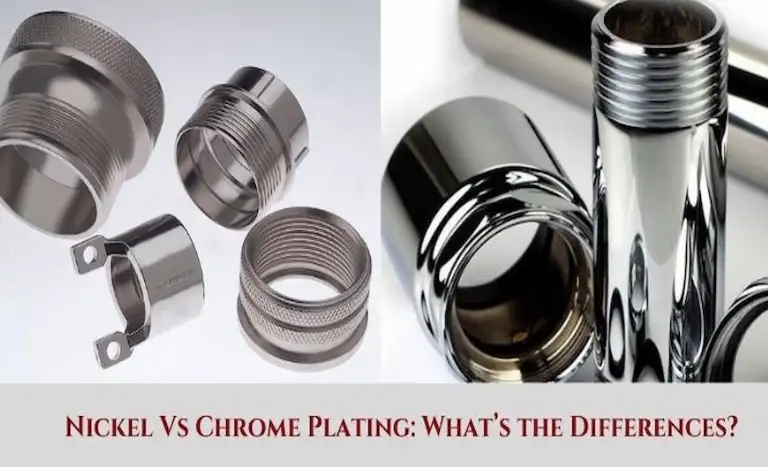When comparing nickel plating and chrome plating, chrome generally offers superior hardness, wear resistance, and a brilliant mirror finish, ideal for harsh, moisture-exposed or decorative settings. Nickel plating, particularly electroless nickel, supports excellent corrosion protection, uniform deposition on complex geometries, magnetic or solderable surfaces, and cost-effectiveness. Ultimately, the parallel plating technique (nickel vs. chrome) should be selected based on performance demands, aesthetic goals, environmental compliance, and industry standard requirements.
Plating metal surfaces with nickel or chromium layers has long served the dual purpose of fortifying base materials while enhancing visual appeal. From automotive trim and hydraulic components to medical instruments and electrical contacts, both plating approaches enable extended service life, surface toughness, and controlled aesthetics.
Fundamentals of Nickel Plating
Electrolytic (Bright and Engineering Nickel)
This involves applying an electrical current to deposit nickel ions onto prepared substrates. Bright nickel yields a shiny, decorative layer, while engineering (matte) nickel prioritizes corrosion resistance with minimal glare.
Electroless (Chemical) Nickel
This method leverages chemical reduction, not electricity, to deposit a nickel-phosphorus or nickel-boron alloy uniformly—even on intricate or recessed parts. It grants consistent thickness, strong corrosion resistance, and adaptability for precision applications.
Key Properties
- Corrosion protection: Highly effective, especially in phosphorous-rich electroless variants.
- Conductivity & solderability: Supports good electrical conduction and solder adherence.
- Magnetic adaptability: Can impart magnetic quality to non-ferrous substrates.
- Finish flexibility: Ranges from satin/brushed to bright finishes.
- Cost efficiency: Generally more affordable, especially for complex or mass-produced parts.

Fundamentals of Chrome Plating
Decorative Chrome
A slim chromium layer over a nickel base—delivers the signature mirror-like sheen, worn on vehicle trim, bathroom fixtures, and household items.
Hard Chrome and Thin Dense Chrome (TDC)
- Hard chrome: Thick, rugged layers for wear-intensive environments like hydraulic rods, pistons—valued for extreme abrasion resistance and low friction.
- Thin Dense Chrome: Offers high surface hardness and corrosion resistance with minimal thickness and cracking—used in precision, aerospace, and medical fields.
Key Properties
- Surface hardness: Ranks extremely high (65–69 HRC)—not matched by nickel.
- Mirror finish: Achieves striking reflectivity, bluish-white tone.
- Exceptional wear resistance: Suitable for friction, sliding, and outdoor-facing components.
- Corrosion resistance: Strong—especially with chromium’s oxide layer.
What are the disadvantages of nickel plating?
- High Cost and Energy Consumption.
- Removal and Rework Challenges.
- Reduced Self-Lubrication and Increased Friction.
- Welding and Soldering Difficulties.
- Adhesion Problems with Certain Substrates.
- Porosity, Pitting, and Corrosion Risks.
- Environmental Impact and Hazardous Waste.
- Health and Safety Concerns.
- Process Control Sensitivity.
- Aesthetic Aging (Yellowing or Tarnishing).
Side-by-Side Comparison
| Feature / Concern | Nickel Plating | Chrome Plating |
|---|---|---|
| Corrosion Resistance | Very good (especially electroless) | Excellent, especially decorative and hard chrome |
| Surface Hardness | Moderate (~50–60 HRC depending on method) | Very high (65–69 HRC, depends on thickness) |
| Finish / Aesthetic Options | Satin, brushed, matte, bright | Mirror-like, bluish-white, decorative |
| Uniformity | Excellent, ideal for complex shapes | Less uniform—requires grinding for thickness control |
| Cost Considerations | Usually lower, cost-effective for volume | Higher, especially for thick or multilayer jobs |
| Health / Environmental | Lower hazard, manageable waste | High hazard—hexavalent chromium toxic, regulated |
| Special Properties | Magnetic, solderable, conductive | Extremely hard, low friction, visually striking |
| Typical Applications | Electronics, kitchenware, engineering parts | Automotive trim, hydraulic cylinders, tools |
Environmental and Health Considerations
Why is chrome plating illegal? Chrome plating traditionally involves hexavalent chromium, a known carcinogen regulated by agencies including EPA and OSHA. It demands specialized ventilation, fume control, and wastewater treatment. Nickel processes carry hazards too—nickel ions require treatment—but electroless and modern systems are comparatively more manageable.
Standards, Specifications, and Industry Context
- ISO 1456 (DS/EN ISO 1456) defines thickness classes and corrosion protection levels (class 1–5) for nickel and chrome coatings on metals like steel, copper, brass, detailing layer combinations such as Fe/Ni20b/Cr r.2.
- AMS 2460, AMS 2406, MIL-STD-1501 apply to chrome plating especially in aerospace and weapon systems.
How to tell if something is nickel or chrome plated?
Visual & Aesthetic Clues
-
Color tone:
-
Nickel plating tends to exhibit a silver-white appearance with a slight yellowish or warm hue.
-
Chrome plating generally has a bright bluish-white tone, particularly in decorative chrome coatings.
-
-
Reflectivity:
-
Chrome plating (decorative) delivers a mirror-like shine, able to reflect sharp details such as numbers on a ruler.
-
Nickel plating (especially matte or satin variants) is less reflective and may appear duller.
-
-
Peel or layer exposure:
-
When chrome is applied over nickel, worn or peeling sections may reveal the nickel layer beneath.
-
Simple Physical Tests
-
Magnet test:
-
Electroplated nickel (pure nickel) is magnetic, while electroless nickel (Ni-P or Ni-B) and chromium are not magnetic.
-
-
Hardness check:
-
Nickel plating: Electrolytic ~150–300 HV (relatively soft), Electroless ~500–700 HV.
-
Chrome plating: Decorative ~600–1000 HV; Hard chrome ~800–1200 HV.
-
Chrome coatings are considerably harder and resist scratching better than nickel.
-
Additional Identification Pointers
-
Historical context (especially for firearms or vintage items):
-
Items from the 19th/early 20th century likely use nickel plating, as chrome wasn’t widely available until after the 1920s–1940s.
-
Selection Criteria for Project Requirements
- Decorative vs. Functional: Choose chrome when visual impact or high friction performance is key; nickel if uniform protection and functional properties matter.
- Complex Geometry? Electroless nickel wins for consistent coverage.
- Budget Constraints? Nickel often lower cost.
- Health and Compliance? Nickel is more eco-friendly and easier to control.
- Standards? Follow ISO or military specifications applicable to your industry.
- Maintenance? Chrome is easier to clean of fingerprints (though more showing), nickel hides water spots and scratches better.
Emerging Trends and Alternative Coatings
- Thin Dense Chrome (TDC) is gaining traction in aggressive industrial use thanks to minimized cracking and high performance.
- Zinc-nickel plating offers outstanding corrosion performance (up to 1,500 hr salt spray) with safer chemistry.
- Engineered composite coatings—polymer/metal/ceramic blends—rival hard chrome in hardness and durability while avoiding toxic processes.
Frequently Asked Questions (FAQs)
- Can chrome be plated over nickel?
Yes—decorative chrome typically overlays a nickel undercoat for improved corrosion protection and finish brightness. - Is electroless nickel plating suitable for complex geometries?
Absolutely—it deposits uniformly even in recessed areas, unlike line-of-sight electroplating. - Which process offers better wear resistance?
Hard chrome surpasses nickel in abrasion resistance, though electroless nickel still provides good long-term durability. - What about magnetic applications?
Nickel plating (especially pure nickel) can impart magnetic properties; chrome does not. - Which plating hides fingerprints better?
Satin or brushed nickel hides fingerprints and water marks more effectively than mirror-like chrome. - What environmental risks are associated with chrome plating?
Hexavalent chromium is carcinogenic and heavily regulated; stringent ventilation, fume suppression, and waste handling are required. - What is Thin Dense Chrome?
A high-performance chrome coating offering wear resistance and hardness in thin, uniform layers—ideal for precise industrial parts. - What industry standards should I consider?
Include ISO 1456 for combined thickness standards, as well as aerospace/military specs like AMS 2460 or MIL-STD-1501. - Is nickel plating cheaper than chrome?
Generally yes—especially for electroless or barrel plating—though final cost depends on thickness, substrate, and finishing. - Which finish lasts longer outdoors?
Hard chrome with nickel underlayer is highly weather-resistant; electroless nickel also performs well, while decorative nickel alone may tarnish over time.

